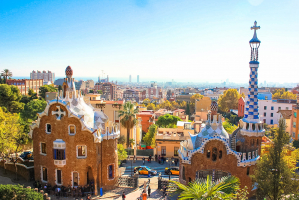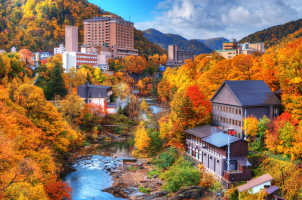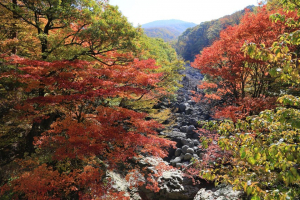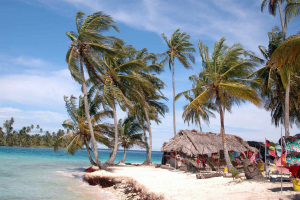Top 12 Most Beautiful National Parks to Visit in Malaysia
Malaysia not only boasts tropical beaches, but it also has several national parks that protect the flora and animals of the rainforests. Visiting these parks ... read more...is an excellent way to spend a day or weekend surrounded by lush nature. Check out the most gorgeous national parks to visit in Malaysia.
-
It is located in the heart of Kuala Lumpur, formerly known as the Bukit Nanas Forest Reserve, and welcomes you to the amazing natural habitat in the concrete metropolis. As you travel through the park, you can see the KL Tower from a distance. The oldest protected jungle (encompassing 9.37 hectares) is accessible through short paths from Jalan Ampang or Jalan Raja Chulan. Explore the canopy and walk through the beautiful greeneries while admiring the KL Tower. Visitors must purchase tickets at the headquarters at Raja Chulan or KL Tower.
Kuala Lumpur was created out of the jungle, and there's just one little piece of rainforest left in the city center — 9.73 hectares of what used to be known as the Bukit Nanas Forest Reserve, a short walk from the city's party area. There are a variety of small paths to explore, or you can simply wander the canopy walkway and enjoy the dissonance of seeing concrete structures emerge out of forest trees. You may either walk uphill from Jalan Bukit Nanas or downhill from the KL Tower parking lot.
Location: Pahang, 27000 Kuala Tahan, Pahang, Malaysia

KL Forest Eco Park 
KL Forest Eco Park -
This pristine environment, formerly known as the Pantai Acheh Forest Reserve, is home to 417 flora and 143 animal species. Pantai Acheh Forest Reserve, located on Penang Island's northern point, was designated as the Penang National Park in April 2003. Penang National Park was the first officially gazetted protected area under Malaysia's National Park Act of 1980, demonstrating the State and Federal governments' environmental conservation efforts. Penang National Park was created to conserve and safeguard flora and animals, as well as geological, archaeological, historical, ethnological, scientific, and aesthetic artifacts.
Penang National Park is Malaysia's smallest and newest national park, where tourists may marvel at the rainforest's spectacular trees and fauna. The hiking routes in Penang National Park link to beaches like Monkey Beach, Teluk Kampi Beach, and Kerachut Beach, allowing you to unwind and enjoy magnificent views after a long trek. The right track will take you to Teluk Aling, Monkey Beach, and the Muka Head Lighthouse Trail. Take the left trail to Pantai Kerachut and the Meromictic Lake Trail.
Location: Pinang Jalan Hassan Abbas, 11050 George Town, Penang, Malaysia

Penang National Park 
Penang National Park -
The Gunung Mulu National Park is located in the Miri Division of Sarawak, Malaysia. It's a UNESCO World Heritage Site with caverns and karst formations in a hilly equatorial rainforest environment. The park is well-known for its caverns and the expeditions that have been undertaken to examine them and the surrounding jungle, most notably the Royal Geographical Society Expedition of 1977–1978, which saw over 100 scientists spend 15 months in the field.
This sparked a series of more than 20 expeditions known as the Mulu Caves Project. Mulu Caves National Park, which is surrounded by Borneo's rainforest, has a diverse collection of caves for visitors to explore. Explore the caverns, including Deer Cave and Clearwater Cave, with World Heritage guides to learn more about their ecological development. Although traveling and climbing through the caverns is physically demanding, you will feel glad at the end.
After being awestruck by the natural splendor of the caverns. Swim at the Paku Waterfall or take a Long Imam Ba'Desai Waterfall excursion from Melinau River to Long Imam to cool down. Then, learn about the Penan community's everyday existence in their village.
Location: Jalan Pantai Acheh, 11000 George Town, Pulau Pinang, Malaysia

Mulu Caves National Park 
Mulu Caves National Park -
Bako National Park is a national park in Sarawak's Kuching Division. It is Sarawak's oldest national park, having been established in 1957. It has a land area of 27.27 square kilometers (10.53 square miles) and is located near the point of the Muara Tebas peninsula, at the confluence of the Bako and Kuching rivers. It is around 40 kilometers (25 miles) by car from Kuching. Sandstone erosion over millions of years has resulted in a coastline of towering cliffs, craggy headlands, and expanses of white, sandy coves. Many of the rocky headlands have been sculpted into beautifully shaped sea arches and sea stacks with colorful patterns caused by iron deposition at the base of the cliffs by wave erosion.
The most renowned is designed like a cobra's head and may be seen while taking a boat trip from the headquarters or one of the beaches. Some of these rock formations may be observed as you enter the park from Teluk Assam Beach. The park is only accessible by boat, which takes around 20 minutes from the settlement of Kampung Bako. It is frequently visited as a day excursion from Kuching, but lodging (campground and forestry service bungalows) are provided.
Location: Kuching, Sarawak, Malaysia
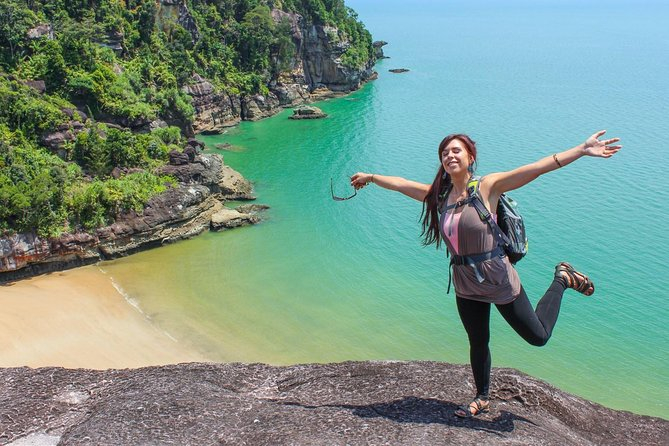
Bako National Park 
Bako National Park -
Lambir Hills National Park is home to 237 different species, including birds, deers, insects, wild pigs, flying squirrels, and gibbons. The jungle pathways lead to waterfalls and swimming holes scattered across the woods. The Latak Waterfall Trail and the Pantu Waterfall Trail go to the beautiful waterfalls. The suspension bridge is now blocked owing to fallen trees caused by high winds, however, tourists can access it via alternate paths. You'll see wild orchids along the difficult Summit Trail and unwind at Dinding Waterfall on your way back after a lengthy hike.
Researchers conduct a census of these trees every few years to track their development and changes in the population structure of each species. A count of all the trees in the plot revealed 1175 distinct species. As a result, Lambir Hills National Park may have the most diversity of trees of any forest in the Old World. The Dipterocarpaceae family, which includes Shorea and Dryobalanops species, is the dominating tree family in the park. Lambir Hills National Park is a vital sanctuary for species that have been extensively logged elsewhere since it is Sarawak's only undisturbed area of lowland dipterocarp forest.
Location: Lambir Hills National Park, Miri, Sarawak, Malaysia

Lambir Hills National Park 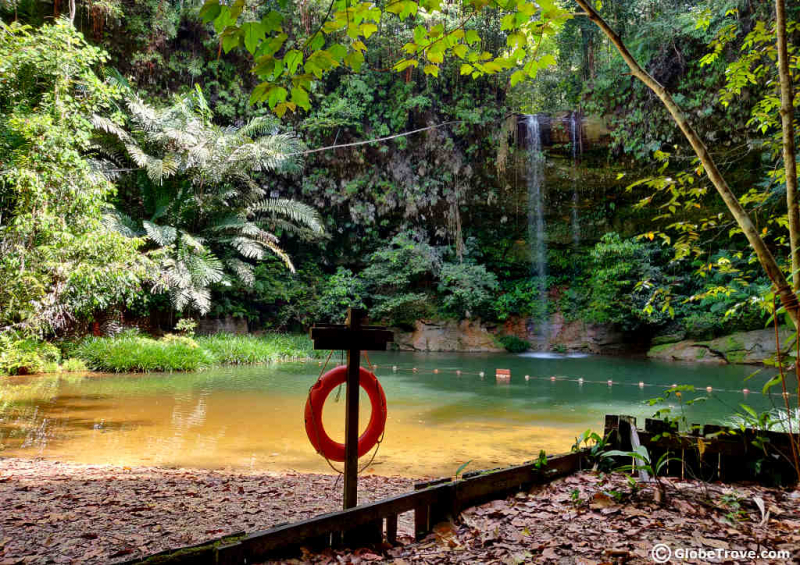
Lambir Hills National Park -
Kinabalu Park, established in 1964 as one of Malaysia's first national parks, is Malaysia's first World Heritage Site, designated by UNESCO in December 2000 for its "outstanding universal values" and role as one of the world's most important biological sites, with over 4,500 species of flora and fauna, including 326 bird, around 100 mammals, and over 110 land snail species. It is located on the west coast of Sabah, Malaysian Borneo, and encompasses an area of 754 square kilometers surrounding Mount Kinabalu, the highest summit on the island of Borneo at 4,095.2 meters.
Climbing Mount Kinabalu is not the only activity available at Malaysia's first World Heritage Site, Kinabalu Park. There are several methods to experience Borneo's natural rainforest ecosystem. The national park has about 5,000 plant species and over 400 bird and animal species. Admire the stunning views of the rainforest and pose for a snapshot with Mount Kinabalu in the background. Discover a wide range of animals and plants, including Rafflesia, the world's largest and most fragrant flower. Visit the villages to learn about the Dusun people's rich culture and history.
Location: Kinabalu Park, Ranau, Sabah, Malaysia
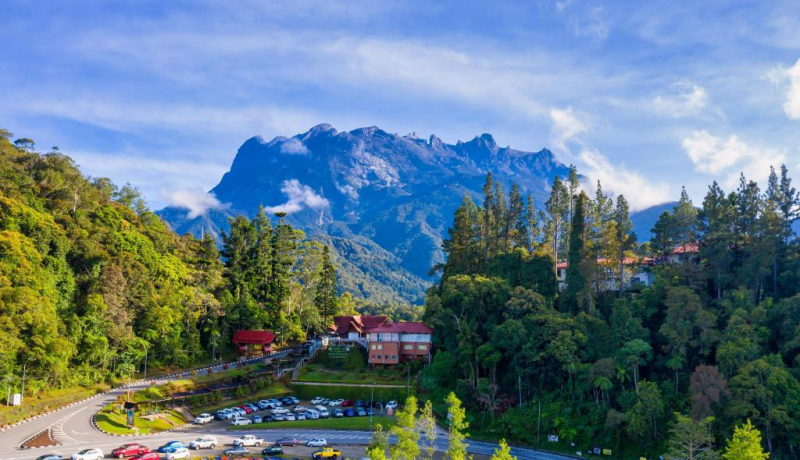
Kinabalu Park 
Kinabalu Park -
Kubah National Park is a short and pleasant day excursion from Kuching. This little park (2,230 ha.) on a small sandstone plateau features crystal clear streams and miniature waterfalls and bathing pools. Kubah is largely covered by mixed dipterocarp forest, including one of the most diverse palms and orchid collections in Borneo. The diverse wildlife includes the bearded pig, mouse deer, black hornbill, and other amphibian and reptile species. However, because Kubah's wildlife prefers to stay deep in the forest, it is not a park for "animal encounters" (Bako is unbeatable in that respect).
This park is home to a diverse array of palm trees and wild orchid species. The rainforest offers six paths to wander through that include waterfalls, streams, and bathing springs, as well as the way to Gunung Serapi. Discover numerous palm tree species on the Palmetum Trail and waterfalls on the Waterfall Trail. Walk via the Rayu Trail from the main office to learn about animals at Matang Wildlife Centre. Along the route, discover massive trees such as Bintagor trees, which are now being studied for AIDS research. The Belgian Trail leads you to many different florae, including Borneo's Belian trees, forest birds, and squirrels.
Location: Kubah National Park, 93050 Kuching, Sarawak, Malaysia

Kubah National Park 
Kubah National Park -
Endau-Rompin National Park is a protected tropical rainforest at Malaysia's southernmost extension of the Tenasserim Hills. It is located south of the state of Pahang and northeast of the state of Johor and covers an area of around 870 km2 (340 sq mi), making it Peninsular Malaysia's second-largest national park after Taman Negara. It contains around 26 kilometers (16 miles) of the trail. The Malaysian government designated it as the country's second national park. Gunung Besar, Johor's second-highest mountain, is located within the park. The park gets its name from the Endau and Rompin rivers, which run through it. The Segamat, Selai, and Jasin rivers also run through the park.
This park is named for two rivers that run through it and is covered in pure tropical rainforest, making for some enjoyable walking. This ancient terrain, which goes back 240 million years, is definitely worth experiencing during your vacation to Malaysia because of its magnificent beauty, which looks like something out of Jurassic Park. Rivers, lakes, and waterfalls dot the park's grounds, and coming upon them after a long hike through the jungle is a memorable experience. This national park boasts a wealth of natural treasures that will astonish and awe you with their majesty, including Malaysia's second-highest mountain.
Location: Sungai Bantang, Bekok, Johor, Malaysia

Endau-Rompin National Park 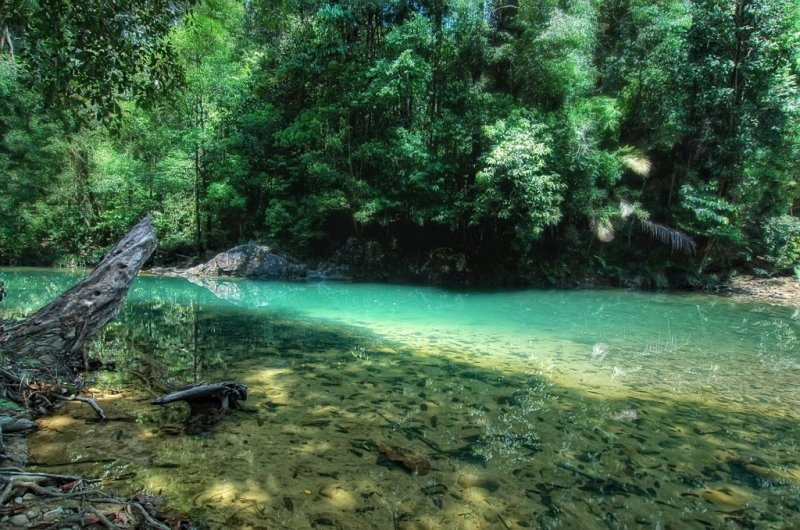
Endau-Rompin National Park -
The Tunku Abdul Rahman National Park is a collection of five islands located between Kota Kinabalu and Kota Kinabalu in Sabah, Malaysia. The park covers 4,929 hectares, two-thirds of which is water. It was part of the Crocker Range bulk of sandstone and sedimentary rock on the mainland before the Ice Age. However, around a million years ago, melting glaciers caused sea-level fluctuations, and sections of the mainland were cut off by the sea, forming the islands of Gaya, Sapi, Manukan, Mamutik, and Sulug. The five islands that comprise Tunku Abdul Rahman National Park are an ideal sanctuary. You might be forgiven for thinking you're daydreaming as you speed across the lovely blue waters to the islands.
All of the islands, varying in size, offer beautiful beaches to rest on, and the surrounding coral reefs provide excellent snorkeling and scuba diving. Although the park might become busy, this only serves to showcase its popularity and attests to the spectacular attractions on display. These islands are a must-see in Malaysia because of their lush green woods that gradually give way to gorgeous white beaches that melt into the ocean around them.Location: Kota Kinabalu, Sabah, Malaysia
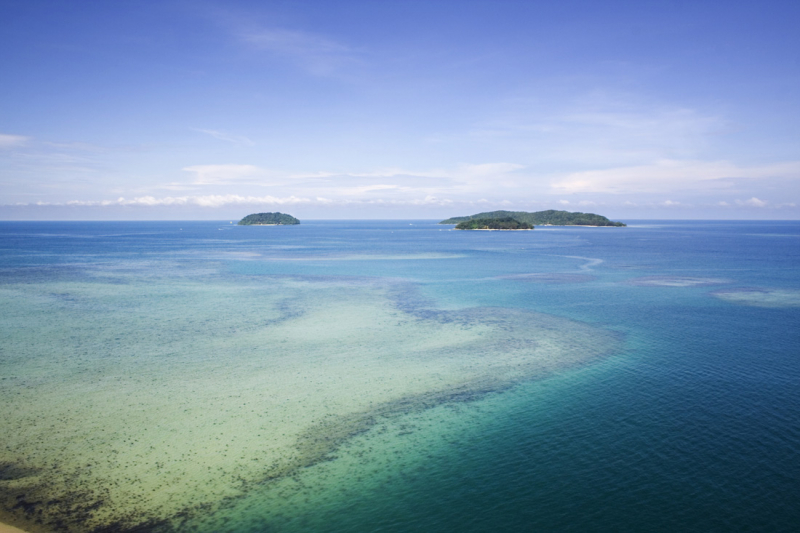
Tunku Abdul Rahman National Park 
Tunku Abdul Rahman National Park -
The national park provides a recreational resource with rainforest, white and golden sand beaches, and rocky coastlines overlooking the South China Sea. The park is abundant in both vegetation and animals. The park was initially gazetted on December 1, 1976, and it was published on April 20, 1978. It formerly covered 70.64 km2 (17,460 acres) of the forest, ranging from Sungai Like in the south to Sungai Similajau in the north. On February 17, 2000, another 19.32 km2 (4,770 acres) were added to the park, bringing the total area to 89.96 km2 (22,230 acres) along a thin coastal strip.
This national park, located on the coast of the island of Borneo, is a lovely blend of a number of varied habitats and offers a plethora of various activities for tourists to select from. Whether you are a birdwatcher, a hiker, or a snorkeler, the facilities on offer are amazing, and each visitor is free to follow their favorite interest as they wish. Beautiful beaches flank the shore, and dense, impenetrable vegetation rises until it is stopped by the sand. Take to the sea for a spectacular boat ride; glancing back at the shore will provide you with an incredible view of this gorgeous length of coastline.
Location: Similajau, Bintulu, Sarawak, Malaysia

Similajau National Park 
Similajau National Park -
The beautiful caverns housed inside the limits of this remarkable national park make it well worth a visit. The cave complex shows evidence of human occupancy extending back over 40,000 years, making it a significant archaeological site in Malaysia. Pottery, axes, jewelry, and other artifacts dating back millennia have been discovered within the caverns, demonstrating their long-standing attractiveness to people as a location for shelter and security.
The caverns themselves are breathtaking to explore, as are the unique geological structures. Outside, the growing animals and vegetation come to a halt abruptly in front of the caverns, unable to continue their march. Niah National Park is unique because of the contrast between the warm and welcome life-filled trees and the dismal and freezing caverns.
Location: Niah, Sarawak, Malaysia

Niah National Park 
Niah National Park -
Taman Negara has everything. Whether you want to go rock climbing, go fishing, or learn about the local culture, this national park has something for everyone. With one of the world's oldest tropical rainforests, its animals and plants exude a sense of timelessness that pervades everything, slowing time and providing more unforgettable moments to explore the park. Path cautiously along the thin canopy walk that extends between the trees and hides amid the surrounding greenery for a stunning glimpse of the forest below.
The park's woodlands are home to savage Malayan Tigers, secretive Asian elephants, and the elusive Malayan gaur, all of which are protected. A romantic way to spend a day is to take to the Tembeling River and float through the jungle, taking in all of nature's splendor. Taman Negara, which is serene and calming, must be experienced to be fully appreciated.
Location: Chiku, Kelantan, Malaysia
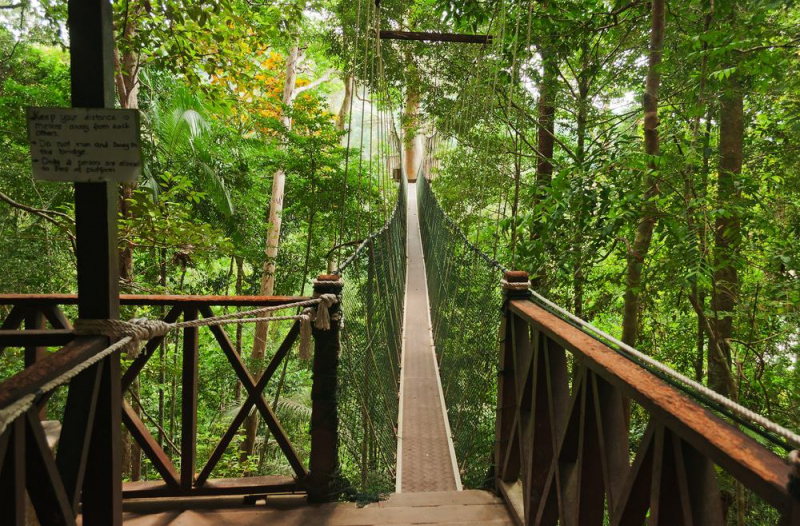
Taman Negara National Park 
Taman Negara National Park
















